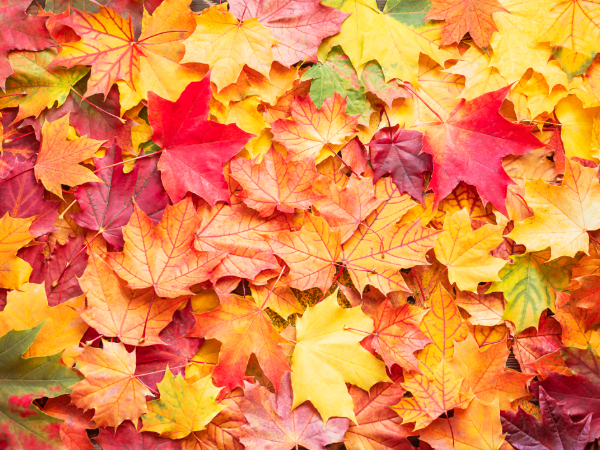
There is nothing better than this change of season: days are getting shorter, temps are gradually cooler, kids are back in school, and ballfields are lit for football and soccer games. Outdoors, the leaves are changing colors. While the leaves are red, yellow, and brown, your fall yard cleanup can be green!
First, it’s okay to leave some leaves!
According to the National Wildlife Federation, a leaf layer around trees and shrubs is an important habitat for a variety of creatures, including salamanders, chipmunks, earthworms, and thousands of insect species.
“Many butterfly and moth species overwinter in the leaf layer,” the NWF website says. “In the case of moths, 94 percent of species rely on the leaf layer to complete their lifecycle. If you rake up and throw away all of your leaves this fall, you’ll be getting rid of important habitat for these beautiful and beneficial insects, many of which are pollinators.”
Next, mulch and compost
As you gather leaves and prepare your lawn and garden for winter, here are some hints that are good for your yard and the environment.
- If there is only a sprinkling of leaves on your lawn, use your mulching mower instead of a rake. The mower will shred the leaves into small pieces and drop them back onto the lawn. These leaf bits protect your grass during the winter and decompose by spring.
- If there are too many to leave on the lawn, use the bag attachment on your mower to collect the shredded leaves. These leaf bits can be used as mulch around plants in your yard or in your gardens. Leaf mulch protects the soil and the helpful creatures that live in your garden from winter’s harsh temperatures.
- If you have lots of leaves, gather them and add them to your compost bin or pile. Mix them in slowly over the next several months with additional “green” debris, such as fruit and vegetable scraps or the grass clippings from your last mowing of the season. If you put in too many leaves at one time, it can slow the composting process.
- After you’ve mulched and composted your leaves, you might have a few bags left over. Contact your local solid waste authority or waste hauler to see if composting or yard waste drop-off service is available in your area. If not, ask for the proper way to dispose of excess leaves in your community.
And please, don’t burn your leaves!
Remember — please don’t burn fall leaves. If you burn piles of leaves, you can accidentally start fires that get out of control, putting people and homes in danger. Plus, leaf burning puts pollutants into the air, making it harder for people to breathe, especially children, the elderly, and those with breathing difficulties.
For a fun compost project with kids, use some of your fall leaves to Make compost in a jar.
Credit: Maria Usanina | iStock | Getty Images Plus
